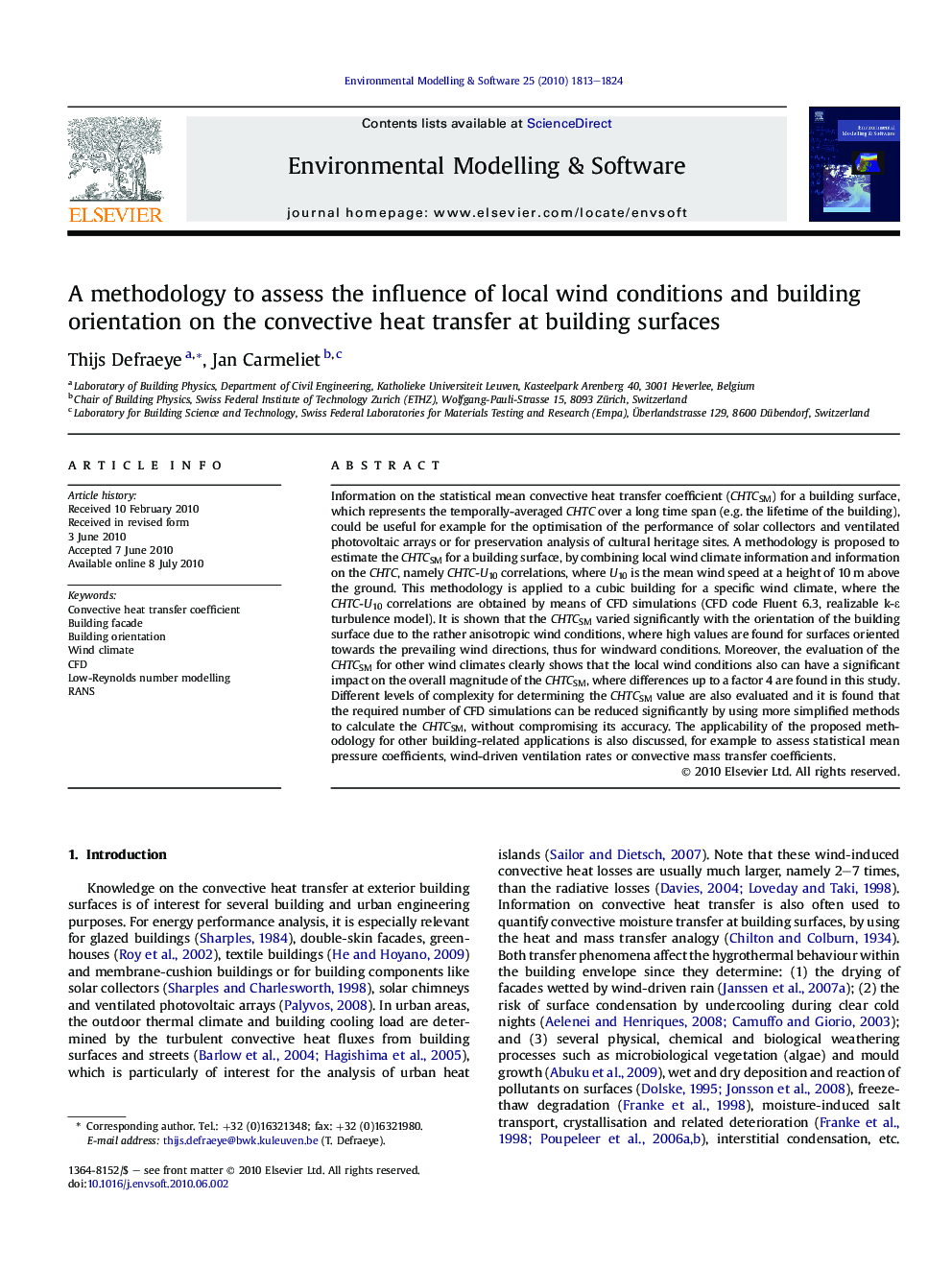| کد مقاله | کد نشریه | سال انتشار | مقاله انگلیسی | نسخه تمام متن |
|---|---|---|---|---|
| 569836 | 876692 | 2010 | 12 صفحه PDF | دانلود رایگان |

Information on the statistical mean convective heat transfer coefficient (CHTCSM) for a building surface, which represents the temporally-averaged CHTC over a long time span (e.g. the lifetime of the building), could be useful for example for the optimisation of the performance of solar collectors and ventilated photovoltaic arrays or for preservation analysis of cultural heritage sites. A methodology is proposed to estimate the CHTCSM for a building surface, by combining local wind climate information and information on the CHTC, namely CHTC-U10 correlations, where U10 is the mean wind speed at a height of 10 m above the ground. This methodology is applied to a cubic building for a specific wind climate, where the CHTC-U10 correlations are obtained by means of CFD simulations (CFD code Fluent 6.3, realizable k-ɛ turbulence model). It is shown that the CHTCSM varied significantly with the orientation of the building surface due to the rather anisotropic wind conditions, where high values are found for surfaces oriented towards the prevailing wind directions, thus for windward conditions. Moreover, the evaluation of the CHTCSM for other wind climates clearly shows that the local wind conditions also can have a significant impact on the overall magnitude of the CHTCSM, where differences up to a factor 4 are found in this study. Different levels of complexity for determining the CHTCSM value are also evaluated and it is found that the required number of CFD simulations can be reduced significantly by using more simplified methods to calculate the CHTCSM, without compromising its accuracy. The applicability of the proposed methodology for other building-related applications is also discussed, for example to assess statistical mean pressure coefficients, wind-driven ventilation rates or convective mass transfer coefficients.
Journal: Environmental Modelling & Software - Volume 25, Issue 12, December 2010, Pages 1813–1824